Waking up to a crisp clear winter’s day, we considered our options for an adventure. With the weather turning colder our choices have been narrowed down a bit, but we finally decided on one place that might be better in winter.
Sutton Salt Lake, located in central Otago schist country under the looming peaks of the Rock and Pillar Range, is New Zealand’s only saline lake. It often dries up in summer, leaving only a large expanse of grey mud, and this was the state I found it in on my last visit. But today, we hoped, things would be different.

We set off down the southern motorway, turning off to pass through Outram on State Highway 87. Spotting the Maungatuas on our left as we climbed up into the hills I mentally tipped my hat to Henry Garrett, the enigmatic highwayman who once haunted the range. As we headed inland the landscape became bigger, more dramatic, and began to show its rocky schist bones. The shaded contours of the land were still silver with last night’s frost, which meant we had to stay alert as we wound down into wide valleys and then slowly up the other side. There’s something about the grandeur of inland Otago that speaks directly to my heart. I’m not sure there’s any place like it on the planet.
(Technically we never left the Dunedin City District or entered the Central Otago District, but the environment was definitely more Central than Dunedin, so I’m going to take the liberty of calling it that).
We crested the last ridge before the Middlemarch basin, revealing the green misty valley below and snow-capped Rock and Pillar beyond, glowing in the crisp winter air.
Reaching the flat, we turned off on to Kidds Rd where the highway takes a 90-degree swerve to the right. A short way down this gravel road between paddocks we found the salt lake car park. The air was still cools as we disembarked, but that was fine with me since I’ve been here in summer and almost melted out on unshaded rocky plain.
Then we popped through the gate and headed off down the wide well-maintained trail that wended its way through yellow grasses and around hulking schist tors.
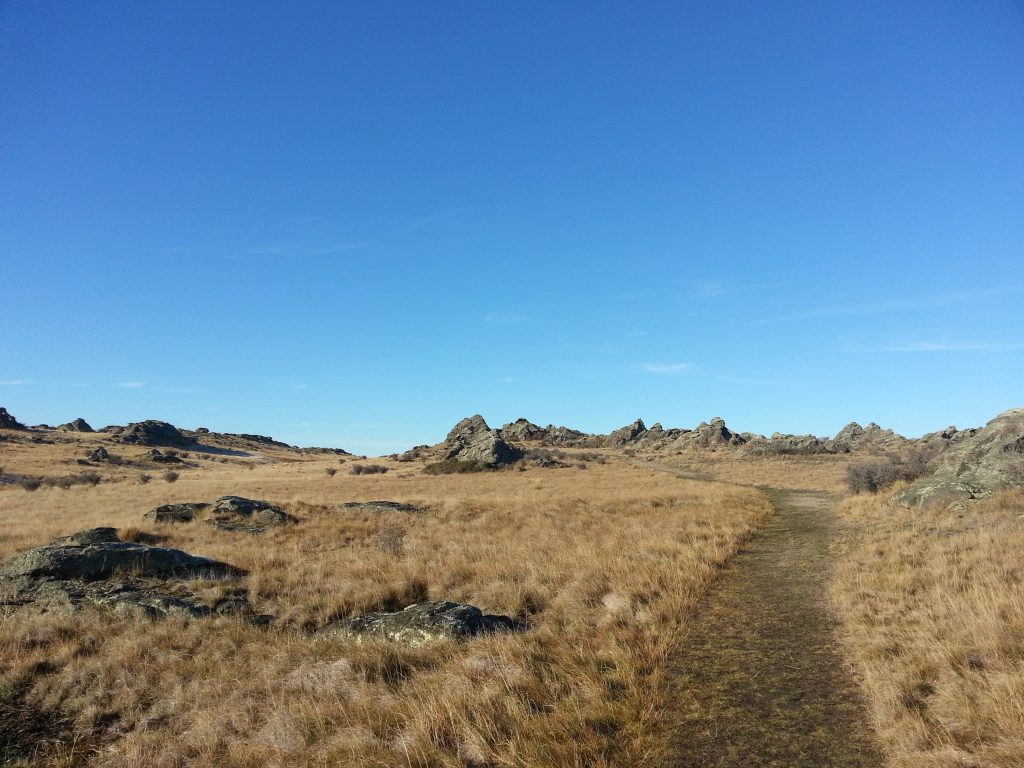
We passed a little pond, still covered with a thin film of ice. It wasn’t long before Dad wanted to stop to look for beetles amongst some nearby tussock, so I busied myself climbing a nearby tor and gazing off into the distance at the snow capped ranges. Then I switched from macro to micro, investigating the icy shaded side of the rock formation.
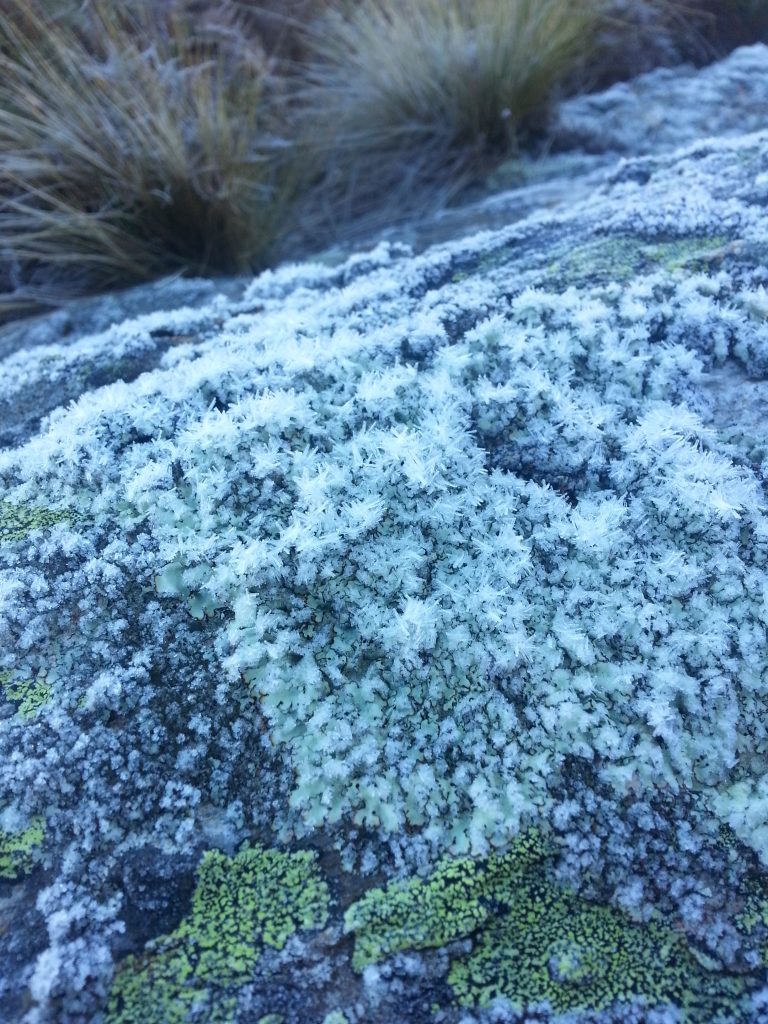
The frost had formed striking patterns on the leaves of some sort of low ground covering plant.

Then we were ready to move on. Previously when I’d been here, there had been a lot of skinks and I’d kind of been looking forward to seeing them again, but it seemed they were all wisely still asleep in their burrows this morning. I guess that’s one good reason to visit Sutton Salt Lake in summer!
The path took us up a ridge dotted with dense prickly matagouri and speargrass bushes, and soon we caught sight of the lake framed perfectly between rocky outcrops. Just as hoped, it had water, perfectly reflecting the brilliant blue sky. Several ducks took flight as we approached the shore.
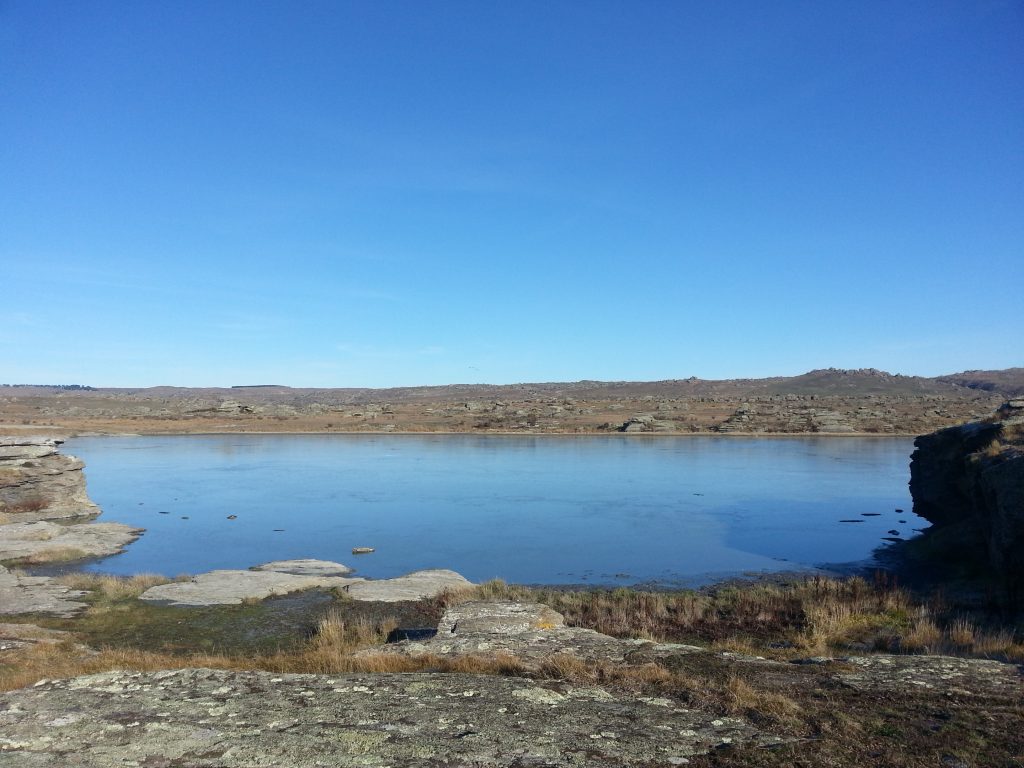
With no streams running in and no streams running out, the lake is filled entirely by rain water. As it constantly evaporates and refills, salts carried by the rainwater become more and more concentrated. Still, it is only about one quarter to one third as salty as sea water.
Our slow circuit of the lake was only broken by my constant insistence on stopping every few steps, marvelling over the view, and taking more photos.
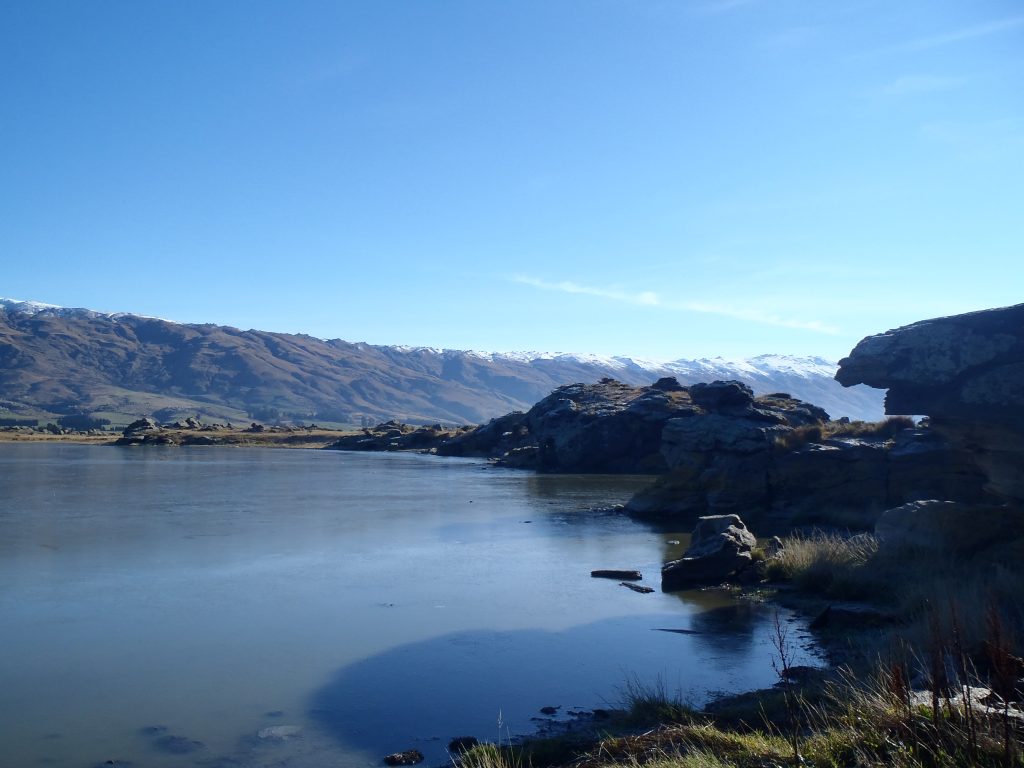
The track brought us all the way around before wending back off into the tussocky plain.
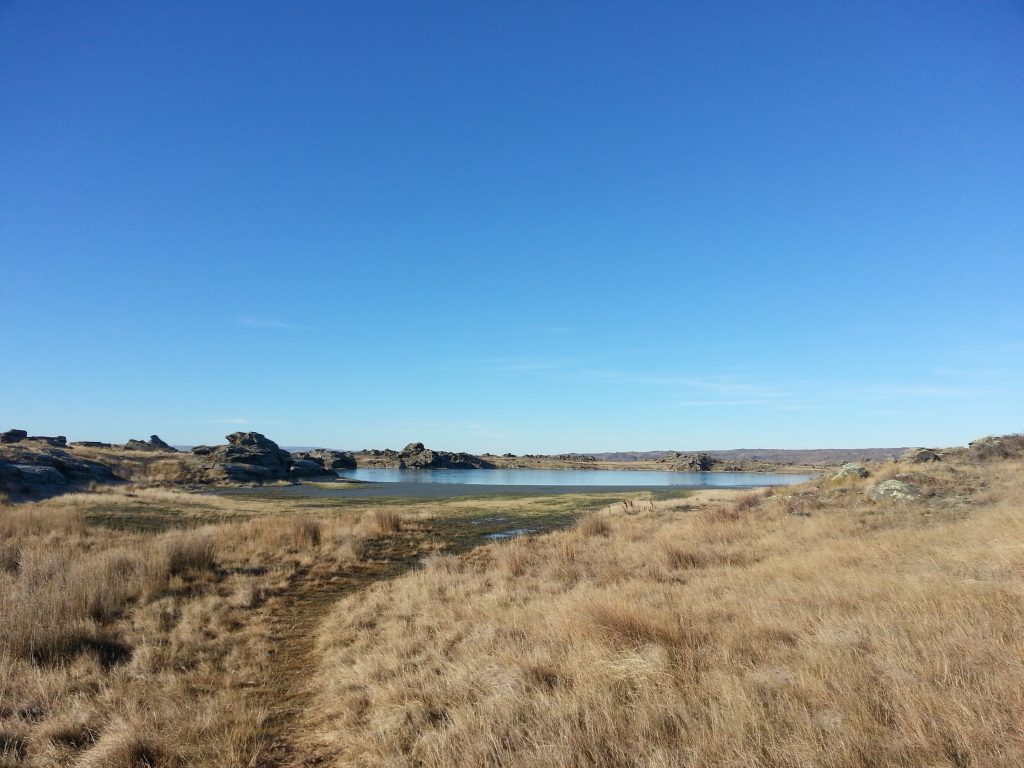
The loop track brought us back through more craggy tors to our starting point.

Satisfied at having caught the lake in its most beautiful state, we returned to our vehicle for the slightly frosty drive back to Dunedin and the hot lunch that awaited us. Deserted once again, the salt lake glittered icily in the winter sun.
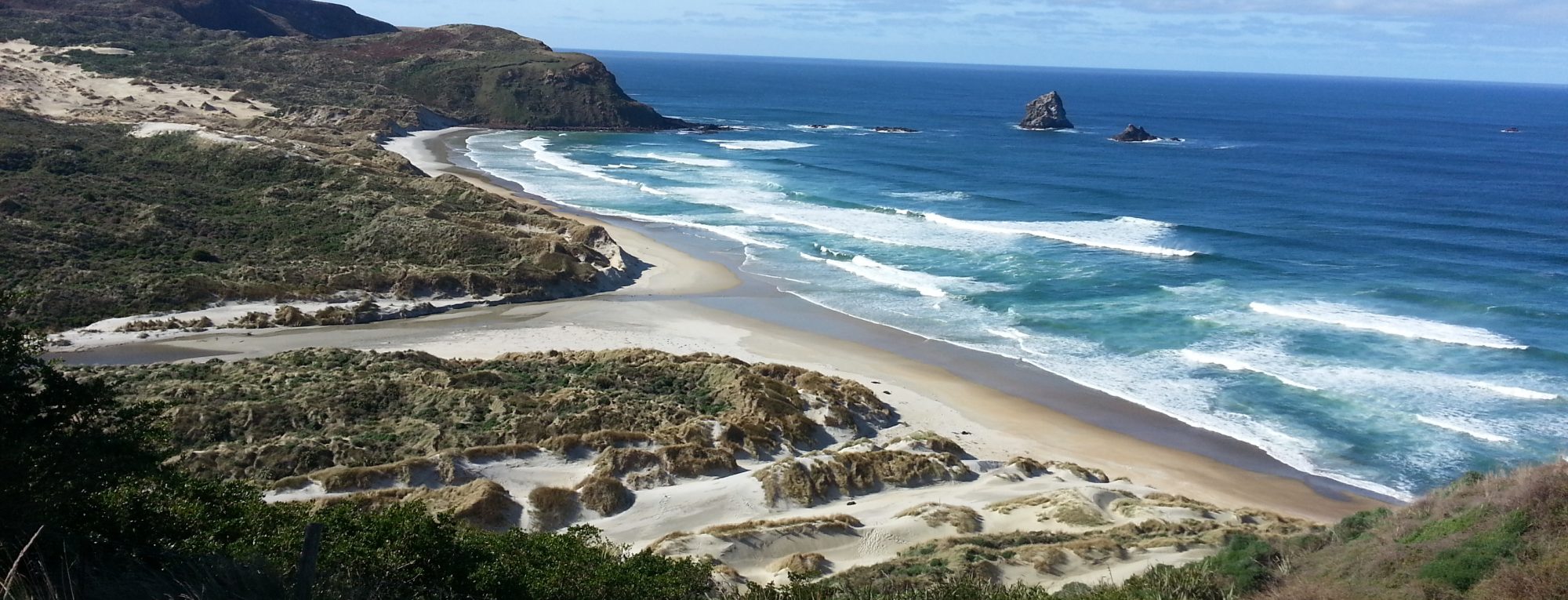
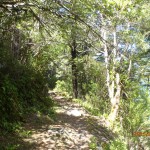

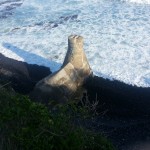
A good yarn as always… brings back memories of family outings